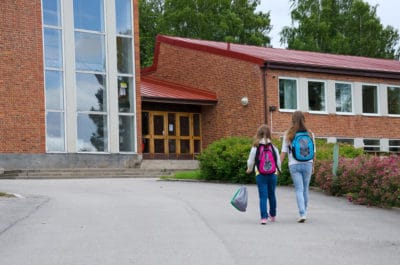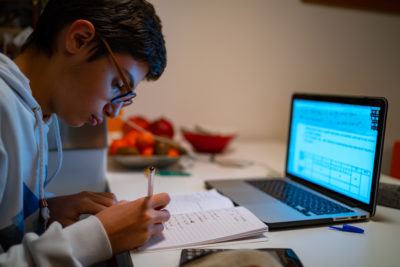
On August 17, many students across North Carolina will return to school online, while others will go back to the physical classroom intermittently. Back in March, North Carolina schools shifted to 100% online unexpectedly. This left parents, teachers, and students the large task of adjusting to this new type of learning environment.
While there are still many questions about safe and effective education during a pandemic, parents and students have learned a lot about what works and what doesn’t. We asked parents what they’ve learned in helping their kids navigate online learning. Here is a list of their tips.
Routines matter
“Create a solid morning routine (with schedules and a rewards system).”
“Make sure tech devices are fully charged the night before.”
“Designate a work space for your child. If possible, anywhere except their bedroom.”
“Though I am not a parent, I have been a virtual student. Sitting down the same time daily and setting reachable daily goals made the big very manageable…I made it a game. I played against myself.”
“Make a schedule. Set timers to be on time to live sessions. Minimize background noise and distractions.”
“Make sure to have head phones for children while completing virtual learning (some teachers provide very low audio on videos/ presentations and students may need them to enhance audio quality).”
“Establish a sleep/wake schedule before virtual learning begins. Students especially those in high school tend to stay up later on devices.”
“Plan ahead for the week/day. That being in the form of workspace, lunch, breaks, homework, and dinner.”
Set clear expectations
“High expectations. I think this is more of a long-term thing, but we’ve set high expectations for our kids and we let them know that nothing had changed when classes went virtual, and they really stepped up. We helped when necessary but largely let our kids do their own work (including productive struggling) and it worked well.”
“Be rigid with a shutdown schedule for devices to ensure adequate rest for better focused learning.”
“Don’t do it for them. Let them do it.”
Communicate regularly
“Email the teacher(s) every Thursday for a check in on how your student is doing that week.”
“If your school uses Google Classroom, sign up for weekly summaries in each class through the Google Classroom.”
“Be patient with your child, teacher, and the school system. This is new for everyone.”
“Get acquainted with the child’s teacher. Check in regularly.”
“Take a moment to discuss what is and is not working. Make adjustments as necessary.”
“Require the child to teach YOU a lesson. If the child’s knowledge is lacking during the lesson ask questions. Give permission for the child to get back to you with the answers to your questions.”
“Foster an interest in learning! Knowledge answers questions. What type of questions do your children have?”
“Consistent routine and check-ins with teachers.”
Make it fun and be active
“Be present. Ask for details about what your student learned each day. Make it fun. Ask for a play by play or dramatic monologue.”
“Get some exercise, even if it just means going up and down the stairs a few times between tasks. Take a chance to go outdoors for fresh air.”
“Create fun breaks so that children can have some physical activity time to stay fit and healthy, properly schedule healthy snack/lunch times.”
“Make the lesson relevant to everyday life.”
“Every interaction is a teaching moment. Making a cake? Have the child read the recipe and measure the ingredients.”
“Keep moving physically every 20 – 30 minutes depending on the age.”
“Celebrate the ‘wins.'”
Have more tips? Leave your advice for virtual learning this fall below.



